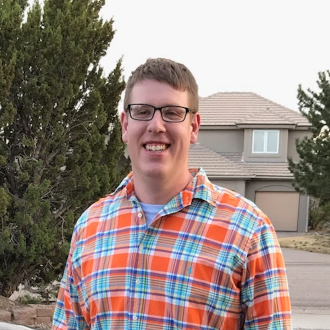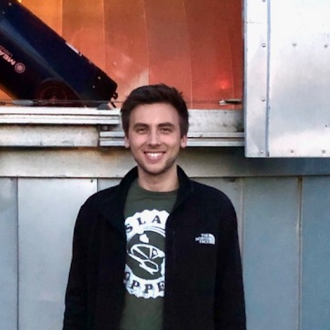Physics and Astronomy undergraduate testimonials
Annually, the Physics and Astronomy Department graduates ~5-10 undergraduates students in the physics majors, and historically 50% of these graduates have taken the astronomy minor.
Some students go on to academic research, but many do not and they take a wide variety of career paths. Graduates in physics and astronomy are amongst the most highly sought after across the modern STEM economy because of the skills they have acquired and developed in their degrees. If you want to learn more about what you can do with a degree in physics or astronomy, read on to learn about what some of our graduates have done after graduation.

Christopher Prokop, 2019
After graduating with his Bachelors from Minnesota State University in Physics and Chemistry, Chris completed his PhD in 2016 at Michigan State University. Read more about his experience at Minnesota State University and beyond here.
Full Story + Show Less -Christopher graduated in 2011 with a BS in physics and in chemistry. After graduation from Minnesota State University, he earned his PhD in Nuclear Chemistry from Michigan State University in 2016 and began working at Los Alamos National Laboratory (LANL) as a post-doctoral researcher in Physics Division. As a post-doctoral researcher Christopher studied neutron-capture reaction cross sections and neutron-induced charged particle reaction cross sections. In spring of 2017 he was awarded a Director’s Post-doctoral Fellowship with his research focused on investigating neutron capture on 65Cu for s-process nucleosynthesis. In spring of 2019 he was converted to permanent staff in Physics Division, and then in fall of 2019 took over as instrument scientist for FP90L at the Los Alamos Neutron Science Center (LANSCE), and as the LANL principal investigator for the Neutron Induced Fission Fragment Tracking Experiment (NIFFTE) collaboration. His current research is focused on precision measurements of neutron-induced cross-section ratios of the major actinides with the NIFFTE collaboration as well as the application of nuclear science techniques to a variety of problems in support of LANL mission. Christopher is also very involved with the development of digital data acquisition and computing infrastructure. Of his time at Minnesota State University, Chris says: "The undergraduate research I performed with Dr. Roberts in MNSU’s applied nuclear science laboratory laid the foundation for the fundamentals of the nuclear science I perform today, and the value of that experience cannot be overstated."

Tyler Hagen, 2021
Recent graduate Tyler Hagen moved to the Salt Lake City UT to begin his astrophysics PhD at the University of Utah. Read more about his experience at Minnesota State University below.
Full Story + Show Less -Tyler graduated in 2021 with a BS in Physics and minors in Astronomy and Mathematics. He immediately continued to graduate school, where he is pursuing his PhD in Physics with emphasis in Astrophysics at the University of Utah. Beginning in Fall 2021, his experience will be comprised of three major duties- classwork, working as a teaching assistant, and research. His later years in the program will focus much more heavily on his research. Although he hasn’t yet decided on a research topic, he is interested in those related to his undergraduate work in galaxy evolution, where he used data from ground and space-based telescopes to study the observed growth of distant galaxies as a function of redshift.
One valuable lesson that Tyler learned from his time at Minnesota State University was that communication is an essential part of science. Whether chatting with a classmate, working with a collaborator, or presenting at a conference, you must be able to explain your work at the necessary level of the listener. Science is a group effort, so effective communication will create a productive, successful, and ultimately more enjoyable environment.
Samantha Sunnarborg, Spring 2023
Recent graduate Samantha Sunnarborg moved to the Providence RI to begin her physics PhD at Brown University. Read more about his experience at Minnesota State University below.
Full Story + Show Less -
